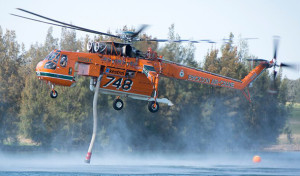Australia’s Civil Aviation Safety Authority has reminded drone owners that flying their unmanned aerial vehicle near bushfires could result in a $9000 fine.
The warning follows revelations of video posted to the internet showing both firefighting efforts and property damage from the recent New South Wales Lithgow bushfires, shot from a drone. The vehicle operated within close quarters of a firefighting helicopter, entered damaged buildings and passed over the heads of rural firefighters.
CASA has reiterated the dangers involved in flying drones in bushfire areas, including the potential for collision with firefighting aircraft and the fact that identification of a drone in the area would immediately ground firefighting aircraft and helicopters in the name of flight safety.
If a drone is seen in the vicinity of a bushfire and is believed to have put aircraft or firefighters at risk the Civil Aviation Safety Authority can investigate. If a breach of the safety rules is identified a fine can be issued. In serious cases individuals may be referred for consideration of criminal prosecution, which may lead to a court imposing higher financial penalties.
Earlier this year authorities in the United States offered a reward of more than A$100,000 for help in tracking down drone operators who interfered with aerial firefighting operations on three major bushfires over the North American summer. San Bernadino County authorities said all three instances forced the grounding of firefighting aircraft, allowing the fires to spread, destroy private property and ultimately burn out around 14,500 hectares.
Ironically, unmanned drones in the hands of trained operators may soon be a standard tool for bushfire fighting, following trials in Western Australia and New South Wales that showed small unmanned aerial vehicles equipped with infra-red sensors and downlinks could report on property damage and bushfire movement, particular with the use of infra-red sensors at night when manned firefighting aircraft are grounded.



